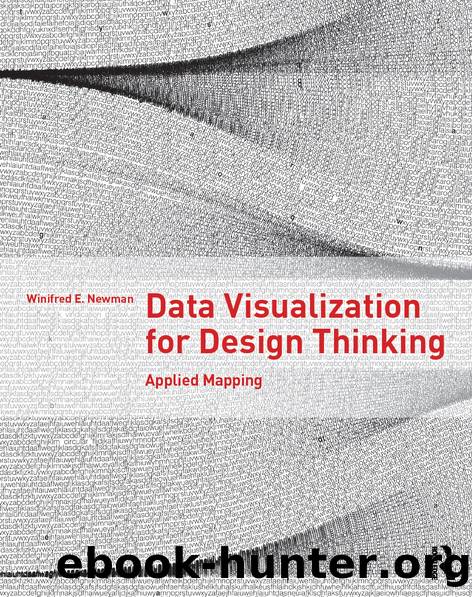Data Visualization for Design Thinking by Newman Winifred E

Author:Newman, Winifred E.
Language: eng
Format: epub
Publisher: Taylor & Francis (CAM)
3.1
Betty Ng, Disneytopia, Harvard University, 2006. Digital print on matte paper, 24Ã 42 in.
3.2
Woodcut illustration of Utopia. Image taken from De optimo reip. statu deque noua insula Vtopia libellous Thomae Mori Epigrammata Thomae Mori, plera? E Graecis uersa. Epigrammata. Des. Erasmi Roterodami. [Moreâs epigrams edited by Beatus Bildus.]Originally published/produced in Basilaee, mense Martio, 1518. © British Library Board / Robana /Art Resources, NY.
Another take on the Disneyworld map is Angelica Trevinoâs disneyland (Figure 3.4). Trevinoâs remapping focuses on the experiences of the original map and offers a âRubikâs cubeâ of possibilities depending on the itinerary of the park goer not the sequence presented in the original map, implying a set of movements suggested by the entry point into the theme park. The remap by Cooke (Figure 3.6) offers a similar take: the original single sheet map is divided and folded similar to a street map, dividing separate themed areas in the park into quadrants refolded and misfolded to provide alternate routes. The continuous topographic surface of the theme park is subtly critiqued by the unfolding of a new topography disoriented from the familiar north-up orientation of most maps. Enhancing this sense of disorientation Cookeâs map re-orients text from side-to-side, top to bottom. Playing on the idea of Walter Benjaminâs archetypal modern urban experience, the map user is invited to wander aimless and slightly disoriented through the pleasures of the park. Much the same way Benjaminâs flâneur wandered idly detached and alienated from the urban life of the city, the themepark-goer is a spectator of the packaged experiences offered by the park. The suggestion theme parks extend and enhance disassociation from reality is captured in a short introductory statement in the map key: âI was very excited to stay at the Disneyland Hotel. It was very convenient. You walk just a short distance into Downtown Disney and get on the monorail taking you right into Disneyland Park.â However, unlike the flâneur character who is a creature of the boulevard semi-conscious of his role as an âartist-poetâ in the city as the Charles Baudelaire suggested,7 the Disney visitor is swallowed into the proscribed and commodified experiences of the park in the same way Benjamin suggests the loss of the flâneur is predicted by the triumph of late capitalism.
Download
This site does not store any files on its server. We only index and link to content provided by other sites. Please contact the content providers to delete copyright contents if any and email us, we'll remove relevant links or contents immediately.
| Automotive | Engineering |
| Transportation |
Whiskies Galore by Ian Buxton(41931)
Introduction to Aircraft Design (Cambridge Aerospace Series) by John P. Fielding(33083)
Small Unmanned Fixed-wing Aircraft Design by Andrew J. Keane Andras Sobester James P. Scanlan & András Sóbester & James P. Scanlan(32760)
Craft Beer for the Homebrewer by Michael Agnew(18191)
Turbulence by E. J. Noyes(7972)
The Complete Stick Figure Physics Tutorials by Allen Sarah(7331)
Kaplan MCAT General Chemistry Review by Kaplan(6893)
The Thirst by Nesbo Jo(6870)
Bad Blood by John Carreyrou(6579)
Modelling of Convective Heat and Mass Transfer in Rotating Flows by Igor V. Shevchuk(6405)
Learning SQL by Alan Beaulieu(6232)
Weapons of Math Destruction by Cathy O'Neil(6201)
Man-made Catastrophes and Risk Information Concealment by Dmitry Chernov & Didier Sornette(5946)
Digital Minimalism by Cal Newport;(5695)
Life 3.0: Being Human in the Age of Artificial Intelligence by Tegmark Max(5504)
iGen by Jean M. Twenge(5382)
Secrets of Antigravity Propulsion: Tesla, UFOs, and Classified Aerospace Technology by Ph.D. Paul A. Laviolette(5328)
Design of Trajectory Optimization Approach for Space Maneuver Vehicle Skip Entry Problems by Runqi Chai & Al Savvaris & Antonios Tsourdos & Senchun Chai(5032)
Pale Blue Dot by Carl Sagan(4944)
